|
1/16/2017 0 Comments Common Food Favorites and Yummy Alternatives to support Brain Health in Children Image credit: Flickr user mr911. Image credit: Flickr user mr911. It’s unfortunate, but most kids’ favorite foods are loaded with inflammatory ingredients and can be trigger foods for some that may be dealing with symptoms of ADHD, autism, autoimmune disorders or mood related issues. Marketing strategies target kids with colorful foods, sugary sweets and characters from beloved programs promoting snack products. From frozen waffles, to flavored yogurt snacks, to cereals that are all colors of the rainbow, kids (and their parents) are inundated with messages to buy and consume products that are actually quite harmful. Commercial breakfast cereals often contain harmful artificial colors and flavors (known to cause hyperactivity), as wells as very high amounts of sugar (inflammatory for the brain and endocrine system). In fact, most packaged goods, what we call processed and refined foods, contain a version of artifical ingredients for coloring, flavor, or preservative, added sugar, and refined food products (like flour). The bottom line is these foods, while tasty, do not offer enough nutrients for a growing brain and body, and actually have harmful effects on health, mood, and behavior!  Image credit: Flickr user mauroescritor. Image credit: Flickr user mauroescritor. So let’s take a look at some common kid go-to’s and come up with alternatives that offer more nutrition overall. 1. Let go of boxed cereals. Try making hot oatmeal for breakfast. Buy plain organic rolled oats and cook according to instructions. You can add in dried fruit, nuts or seeds, and healthy fats for a breakfast that is quick, delicious, and full of good nutrients to start the day. 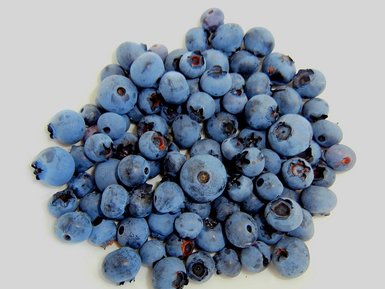 Image credit: Flickr user www.metaphoricalplatypus.com. Image credit: Flickr user www.metaphoricalplatypus.com. Blueberry Muffin Oatmeal Make 1 cup organic rolled oats (follow directions on bag). During cooking, add in 1 TB of flaxseed, hemp seed, or chia seeds and 1 TB of coconut oil, or grassfed butter. Mix in a ¼ cup of frozen or fresh blueberries. Sweeten to taste with maple syrup (start low with the amount of maple syrup. You may be surprised how little is needed for this to taste good). Add cinnamon, nutmeg for added flavor. Serve with organic whole fat milk (recommend coconut milk, grass fed whole fat dairy milk if tolerated, or almond milk). *Fun fact: the blueberries turn this oatmeal blue  Image credit: Flickr user manuuuuuu. Image credit: Flickr user manuuuuuu. Peanut butter Cookie Oatmeal Make 1 cup of organic rolled oats (follow directions on oat’s package). While cooking add 1 TB of hemp seeds. Add in ¼ cup raisins or currants, and 1 tsp cinnamon. When oats are done cooking, add 1 TB of organic peanut butter (no added sugar!), and then sweeten conservatively with maple syrup. Serve with organic whole fat milk as suggested above. 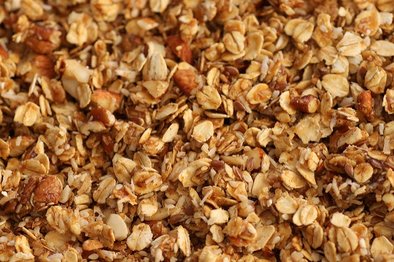 Image credit: Flickr user notahipster. Image credit: Flickr user notahipster. Cinnamon Crunch Granola For even quicker, cold and ready breakfast, make a batch of homemade granola for the week and serve with milk as you would eat cereal. Combine on a baking sheet or tray rolled oats, chopped walnuts, dried currants, coconut flakes, sesame seeds, cinnamon, and pinch of salt baked on low. Stir often to avoid burning. When slightly browned, remove from oven and mix in 1 TB of raw honey. Coat evenly. Allow to cool. (Feel free to experiment with other nuts and seeds like pecans, pumpkin seeds, and dried fruits like unsweetened blueberries or cherries). 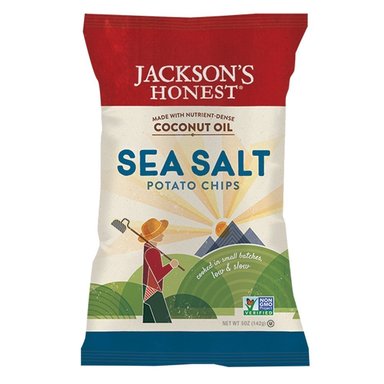 Coconut oil is a better choice for snacks. Coconut oil is a better choice for snacks. 2. Let go of snacks like Cheetos, Doritos, and other chips and things* Look for packaged chips with minimal ingredients and ones that have been cooked with olive oil, coconut oil, or avocado oil. Here is a nice brand. 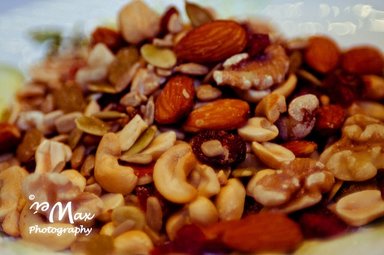 Image source: Flickr user weimaxwei. Image source: Flickr user weimaxwei. Consider trail mix with nuts, dried fruit, and coconut flakes an alternative. 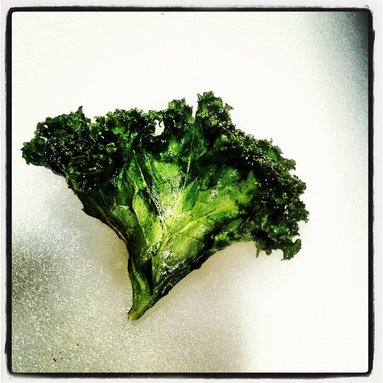 Image source: Flickr user youasamachine. Image source: Flickr user youasamachine. Dinosaur Chips Make your own kale chips. Rinse and chop one bunch of dinosaur kale. Spread evenly onto baking tray, drizzle with olive oil and season with salt, black pepper, and turmeric. Bake at 375 until browning and crispy, stir occasionally. 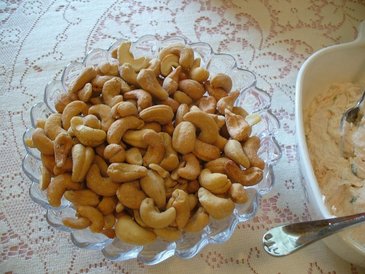 Image source: Flickr user toofarnorth. Image source: Flickr user toofarnorth. Red Hot Cashews Spread cashews evenly on baking tray. Coat with 1 TB melted coconut oil and season liberally with salt, black pepper, turmeric, ginger, and ginger. Bake at 350, stirring occasionally, until browned and toasted.  Image source: Flickr user salihigde. Image source: Flickr user salihigde. *Be aware that Cheetos and Doritos and the like contain ingredients that are addicting (MSG) and bypass our natural awareness of satiety by containing high levels of salt, sugar, or fat in flavor and content. It is almost impossible not to overeat with these snacks and it is best to remove them completely from the diet and reestablish normal taste sensations for salty, sweet, and satiety. We need those things, but in natural and healthy forms. Also, when in the habit of eating these kinds of highly processed foods, we often don’t realize that we are actually in need of water, not food when cravings hit. Always suggest and offer water to your kids when they are asking for things like this and then brainstorm together snacks that are acceptable that have salty, sweet, or spicy flavors that they like. 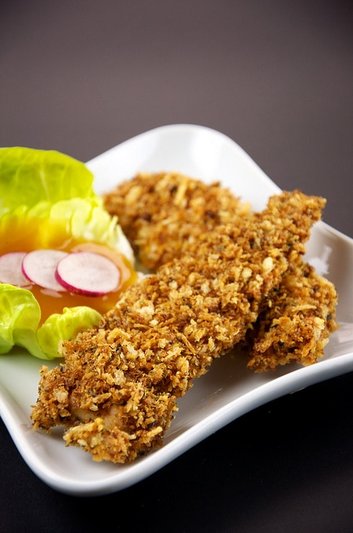 Image credit: Flickr user preppybyday. Image credit: Flickr user preppybyday. 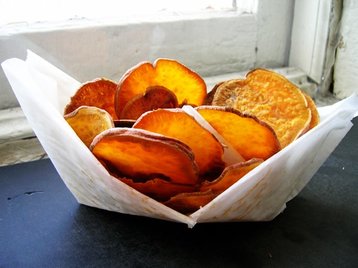 Image source: Flickr user gloriamunty. Image source: Flickr user gloriamunty. Sweet & Salty Homemade Fries Look for Japanese sweet potatoes, they are purple skinned and are white inside. Peel and then slice into thin rounds. Place evenly on baking sheet, coat evenly and liberally with coconut oil and salt, black pepper, turmeric for seasoning. Bake at 400 for about 25 minutes, stirring a couple times to avoid burning. 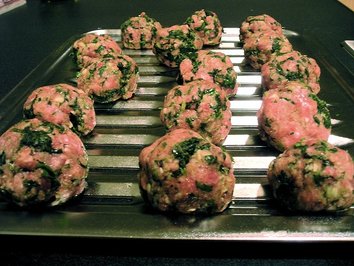 Image source: Flickr user allthingschill. Image source: Flickr user allthingschill. Most fast food dinners can be made from home with much more nutritious ingredients. For the convenience of fast food, consider batch cooking and freezing meals for the week. Making ahead some meatballs to freeze, will provide a healthy, nutrient dense snack or dinner choice for hungry kids. Meatballs can also be a great way to include anti-inflammatory spices and herbs into your diet. Adding in turmeric, black pepper, salt, and fresh thyme can add delicious flavors. Finely chopped fresh cilantro, and lime zest can also make a tasty Pirate Caribbean Meatballs. 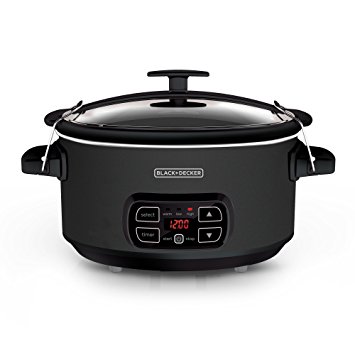 There are many types of slow cookers available. There are many types of slow cookers available. Kitchen tools such as the slow cooker, or instant pot (modern pressure cooker) also provide busy families with more options for home-cooked meals. Simple stews with meat, vegetables and broth can cook in slow cookers all day during school and work hours. And the instant pot can be a big time saver for favorites like homemade chili, beans and rice.  Image source: Flickr user Elisa Bracco. Image source: Flickr user Elisa Bracco. The hard part can be committing to making the changes you may realize are important, even necessary to make. However, once, committed, you can look forward to meals and cooking inspiring creativity, experimentation, and more bonding opportunities between family members. Learning together is a powerful scenario for bonding and deepening relationships. When we can embrace the ongoing education that nutrition and cooking provide then we open up an area of life that has the potential to bring in more vitality, nurturing, and deliciousness than ever before. More than that, the learning process is also a chance to become even more self-aware and self-caring. When we learn, we also learn what works for each person, and what does not. These individual traits can be honored and respected to highlight values in autonomy, independence and self-knowledge. Children develop strong self-care and self-preservation skills when these values, as well as the value of health, are supported in their environment.
0 Comments
Leave a Reply. |
ArchivesCategoriesAll ADHD Brain Health Children's Health Diabetes Iron Magnesium Nutrition Parenting Supplements Zinc |
|
Copyright © Francie Healey
|
Site Design by Angulo Marketing & Design
|
 RSS Feed
RSS Feed